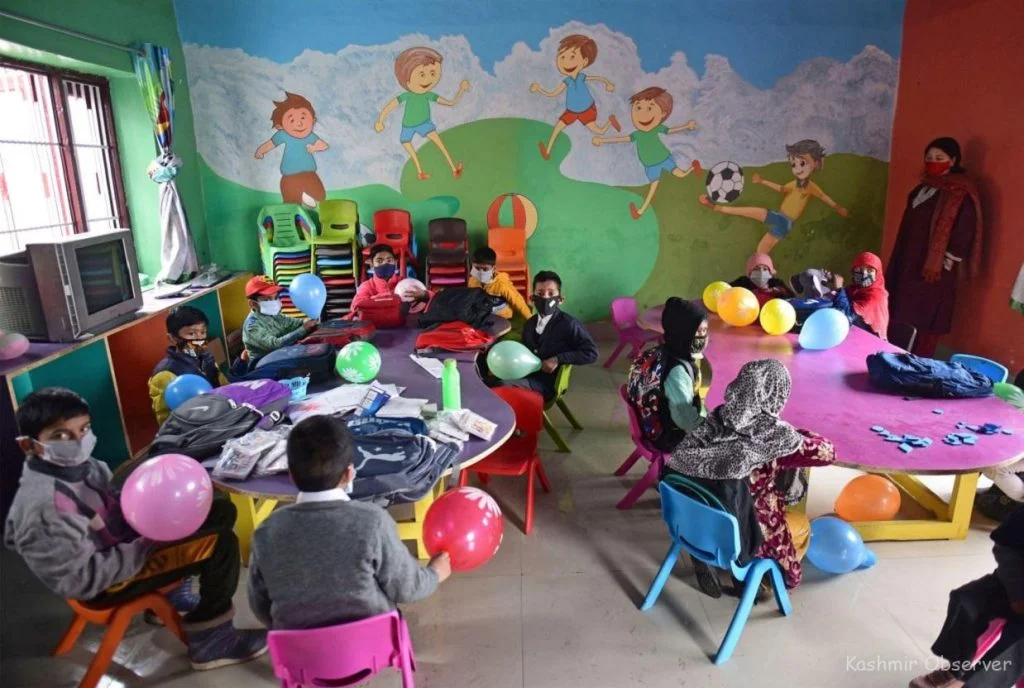
By Sadaket Ali Malik
The National Curriculum Framework of 2022 emphasizes the importance of teaching children in their mother tongue until the age of eight. According to Section 29(f) of Chapter V in the Right to Education Act of 2009, it clearly states that the medium of instruction should, as much as possible, be in the child’s mother tongue.
This approach recognizes the significance of fostering a strong foundation in the language spoken at home during the formative years of a child. By using the mother tongue as the medium of instruction, children can grasp concepts more effectively, aiding in their overall understanding and learning experience.
Research suggests that early education in one’s mother tongue positively influences cognitive development and helps build a solid linguistic foundation. It not only enhances communication skills but also instills a sense of cultural identity and pride in one’s heritage.
Furthermore, the Right to Education Act’s commitment to using the mother tongue as the medium of instruction aligns with the idea of inclusivity and accessibility in education. It ensures that language is not a barrier to learning, especially in the crucial early years of a child’s education.
The Ministry of Education in India is taking significant strides to enhance the learning experience for students by prioritizing the development and implementation of a curriculum framework that emphasizes learning in one’s mother tongue. This initiative aligns with the recommendations outlined in the National Education Policy of 2020.
Recognizing the importance of promoting Indian languages, a high-powered committee has been established to delve into this matter and provide valuable recommendations. An exemplary initiative by the Indian Government is the DIKSHA portal, which offers course materials for Grades 1-12 not only in Indian Sign Language but also in 32 other Indian languages.
The DIKSHA portal plays a crucial role in supporting inclusive education by providing a comprehensive library of resources, including textbooks and teaching materials. This initiative simplifies the process for teachers to create inclusive learning environments, allowing students the valuable opportunity to learn in their native language. By embracing linguistic diversity, the education system aims to empower students, foster cultural pride, and create a more accessible and inclusive learning environment.
The importance of the mother tongue in education has become a focal point in India’s quest to be recognized globally as a knowledge hub. In the pursuit of transforming the traditional education model into a modern ed-tech framework, the recognition of the mother tongue’s significance has led to its introduction in foundational education under the Indian school curriculum. This shift bridges the gap between traditional and modern education systems, aiming to make learning more effective.
The National Education Policy (NEP) 2020 envisions using the home language/mother tongue/local language/regional language as the medium of instruction until at least Grade 5, preferably till Grade 8 and beyond. The NIPUN Bharat Mission, Vidya Pravesh, and NISHTHA FLN emphasize the importance of teaching and learning in the mother tongue. As per UDISE+ 2020-21, teaching is conducted in 28 languages from grades 1-5. The NEP 2020 was formulated through extensive consultations, including discussions with State/UT Governments, MPs, public feedback, and a special meeting of CABE. The finalized NEP 2020 was approved by the Union Cabinet on 29.07.2020, aiming to promote education in regional languages and mother tongues.
The National Education Policy 2020 supports this approach, advocating for the use of the mother tongue or regional language as the medium of education until at least Grade 5, preferably until Grade 8 and beyond. Recognizing linguistic diversity, the policy emphasizes e-learning, with the DIKSHA portal offering course materials in Indian Sign Language and 32 other Indian languages.
Implementing the mother tongue in education faces challenges such as a shortage of qualified teachers proficient in regional languages and a lack of standardized curricula. However, the benefits are substantial, including better student engagement, improved cognitive development, preservation of cultural heritage, enhanced communication skills, and stronger teacher-student relationships.
E-learning can play a pivotal role in promoting the mother tongue as the medium of instruction, providing accessibility, enabling content creation in multiple languages, personalization, teacher training, and fostering collaboration between students and teachers. While challenges exist, addressing them is crucial to realizing the full potential of mother tongue-based education, contributing to a more inclusive and effective learning environment in India.
In Jammu and Kashmir, a rich set of indigenous languages such as Bhaderwahi, Bhalesi, Pogali, Sarazi, Paddari, Khashali, Kishtwari, and Rudhari exist, highlighting the linguistic diversity of the region. It is essential to recognize and document these languages to preserve and celebrate the cultural heritage they represent. Documentation can play a crucial role in safeguarding these indigenous languages, ensuring that they are not lost over time. Efforts to document and promote these languages contribute to the broader goal of preserving the unique linguistic identity of Jammu and Kashmir.
- Views expressed in the article are the author’s own and do not necessarily represent the editorial stance of Kashmir Observer
Follow this link to join our WhatsApp group: Join Now
Be Part of Quality Journalism |
Quality journalism takes a lot of time, money and hard work to produce and despite all the hardships we still do it. Our reporters and editors are working overtime in Kashmir and beyond to cover what you care about, break big stories, and expose injustices that can change lives. Today more people are reading Kashmir Observer than ever, but only a handful are paying while advertising revenues are falling fast. |
| ACT NOW |
| MONTHLY | Rs 100 | |
| YEARLY | Rs 1000 | |
| LIFETIME | Rs 10000 | |











